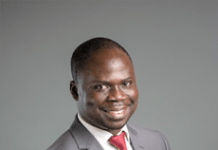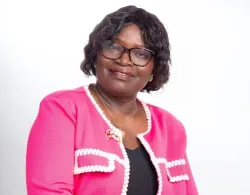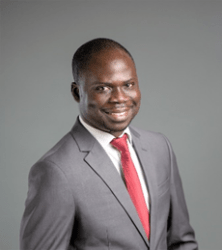At the time of independence Dr. Kwame Nkrumah declared: “My first objective is to abolish from Ghana poverty, ignorance, and disease. We shall measure our progress by the improvement in the health of our people; by the number of children in school, and by the quality of their education; by the availability of water and electricity in our towns and villages; and by the happiness which our people take in being able to manage their own affairs. The welfare of our people is our chief pride, and it is by this that my government will ask to be judged.”
Ghana (Gold Coast, Western Togoland, Northern and Asante Territories) had been under colonial rule for over four centuries. However, in 1957 through various struggles, riots, and several conventions, Osagyefo Dr. Kwame Nkrumah managed to get independence from British rule. He made several declarations and one that caught my mind is this, “the welfare of our people is our chief pride, and it is by this that my government will ask to be judged.”
Now, after 65 long years since independence, can it be said that the main aim of Dr. Kwame Nkrumah has been met? Can Ghana pride itself that it has been able to abolish poverty, ignorance and diseases?
In an article published by Doris Dokua Sasu on statista.com titled ‘International Poverty Rate in Ghana 2017-2022’ stated that “the international poverty rate in Ghana as of 2021 was forecast at 11.3 percent, considering the 2011 poverty line set at US$1.90. The same rate was forecast for 2022, which represented a slight increase compared to 2019, when the poverty rate was measured at 11.1 percent.
Overall, no significant change in the population’s percentage living on up to US$1.90 per day was expected in the years following 2019. The coronavirus (COVID-19) pandemic and its impact on economic activities have contributed to the slowly-improving poverty levels registered in the country since that year.”
According to macrotrends.net, poverty headcount ratio at US$5.50 a day is the percentage of the population living on less than US$5.50 a day at 2011 international prices.
Ghana poverty rate for 2016 was 55.10percent, a 3.7percent decline from 2012.
Ghana poverty rate for 2012 was 58.80percent, a 17.1percent decline from 2005.
Ghana poverty rate for 2005 was 75.90percent, a 8.6percent decline from 1998.
Ghana poverty rate for 1998 was 84.50percent, a 8.1percent decline from 1991.
Therefore, from the above, even though there is some decrease in the poverty rate in the country, there is still more work to be done to ensure poverty is eradicated completely or minimized to the barest minimum.
The Ghana Poverty and Inequality Report: Using the 6th Ghana Living Standards Survey 2016 By Edgar Cooke (Ashesi University College, Ghana); Sarah Hague (Chief of Policy, UNICEF Ghana); Andy McKay (Professor of Development Economics, University of Sussex, UK also indicated that Ghana has experienced steadily increasing growth of over 7percent per year on average since 2005. Following the attainment of middle-income country status in 2010 and discovery of offshore oil reserves, per capita growth in the country has remained relatively high. Despite the growth recorded, inequality has been increasing in the country and poverty remains prevalent in many areas.
Healthcare
On eradicating diseases in the country, the focal point is the healthcare delivery system in the country. And according to a publication on Ghana – Country Commercial Guide website, healthcare sector is the best prospect industry sector for Ghana. So how well has the country’s health sector been over the past years?
Ghana’s health care system keeps increasing by the day. It is organized at three levels: national, regional and district. Health interventions are packaged for each level and are delivered at the respective clinics and hospitals. Healthcare is variable throughout Ghana. Urban centers are well served, and are where most hospitals, clinics, and pharmacies in the country can be found. Rural areas often have no modern healthcare services.
Patients in these areas either rely on traditional African medicine or travel great distances for healthcare. Most healthcare is provided by the government and is largely administered by the Ministry of Health and Ghana Health Services. The healthcare system has five levels of providers: health posts, health centers and clinics, district hospitals, regional hospitals and tertiary hospitals. Health posts are the first level of primary care for rural areas.
Ghana has on average spent about 6 percent of its GDP on healthcare infrastructure. The COVID -19 pandemic has exposed the lapses in its health sector. In June 2020, Ghana’s president announced his intention to build 88 district hospitals. However, it remains to be seen whether this vision will be realized.
Ghana has very limited local production of pharmaceuticals and even less manufacturing of equipment and devices. The country relies on imports for approximately 85 percent of its total healthcare consumption. Ghana has moved away from a ‘pay as you go’ system, where individual health expenditures were paid in cash prior to treatment and covered entirely by patients. The National Health Insurance Scheme now provides wide coverage for a limited scope of health issues, primarily insuring for treatment against the most prevalent diseases (malaria and others). Ghana has sought to introduce more private-sector participation into the healthcare sector
Education
Ghana’s educational system which will help eradicate ignorance is currently a major topic on the news. Ranging from using the semester system at the basic and secondary levels, striking university teachers, schools under trees, double track system, lack of adequate infrastructure in most basic schools (esp. in the rural communities) and student-teacher ratio at all levels of education.
A publication on statista.com, by Doris Dokua Sasu, noted that as of the year 2020, nearly 265.2 thousand children of primary school age in Ghana were out of school. This was a significant increase from the previous year, when around 35.4 thousand children were not enrolled in education in the country.
It also added that as of 2018, 43 percent of men and 40 percent of women in Ghana completed the last grade of middle school. The completion rate for higher educational levels was higher among male students than it was among female students.
At this rate, how can ignorance be eradicated from the country in order to meet the objective of Dr. Kwame Nkrumah?
Therefore, I think this year’s theme for the celebration of Ghana’s 65th Independence Day which is expected to be marked in Cape Coast ‘Working together: Bouncing Back Better’. Dubbed Cape Coast, 2022, is timely.
This is a clarion call on well-meaning Ghanaians to put their ‘two pence’ together to ensure the country bounces back after the dire effects of the COVID-19 pandemic.
So just as Head of Communication for the Ghana at 65 Celebration Committee, Jefferson Sackey explained that “in a bid to bounce back better, we are using the Nkonsonkonson symbol which means “Boame na me mboa wo”, literally meaning ‘help me let me help you.’ This is because we find ourselves in a difficult situation as a world, and it is about time we as citizens support other countries, so that in turn when our country also gets good standing, other countries can also support us.”
So, Ghanaians even though 65 years after independence we have not been able to achieve that much in terms of abolishing ignorance and poverty, we have tried our best in the healthcare delivery system. But hey! there is more room for improvement. Therefore, I am pleading on government, corporate Ghana, religious leaders, traditional authorities and eminent Ghanaians to come on board to ensure we make what we want it to be.
Happy Independence Day!!










